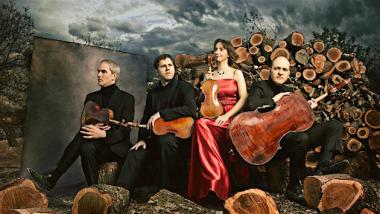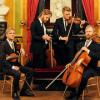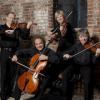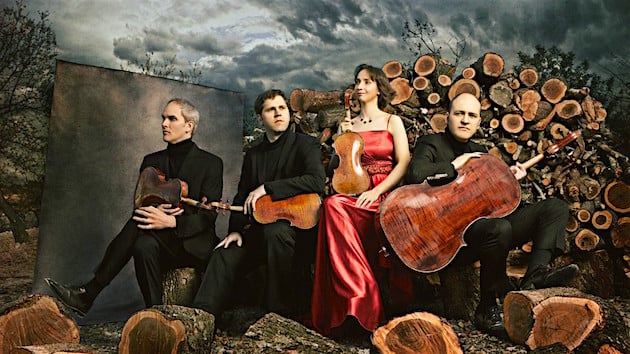
So many accomplished string quartets come through the Bay Area, I often rely on a few descriptors — a kind of group calling card — to jog my memory later on.
I might describe Cuarteto Casals, a Spanish group that has concertized (though not much in the United States) for more than 20 years, with adjectives like clear and razor-sharp — at least, judging from Saturday’s concert at Herbst Theatre.
The group (Vera Martinez and Abel Tomàs, violins; Jonathan Brown, viola; and Arau Tomàs, cello) presented a sound that was immaculate. It was also slightly impersonal — removed, sometimes, from the audience. At the same time, their performances of both Haydn’s Quartet in C Major, Op. 33, No. 3 — better known as “The Bird” — and Mendelssohn’s Quartet in F Minor, Op. 80, were thrilling.
The Haydn work begins with the inner voices playing a kind of slurred tremor, as if the bow wants to go but is repressed by some outside force. The music builds anticipation of the first violin’s arrival, but when he comes in, there’s still no melody.
It’s an unsettled feeling that carries through the rest of the movement — agile music that, just as it becomes lyrical, moves in another direction. On Saturday, the Casals’ performance was wonderfully supple, and the use of what looked like Classical-period bows (combined with diffusing techniques, like holding the bow slightly above the frog) contributed to a sound that was clear and articulate without ever being too pale.
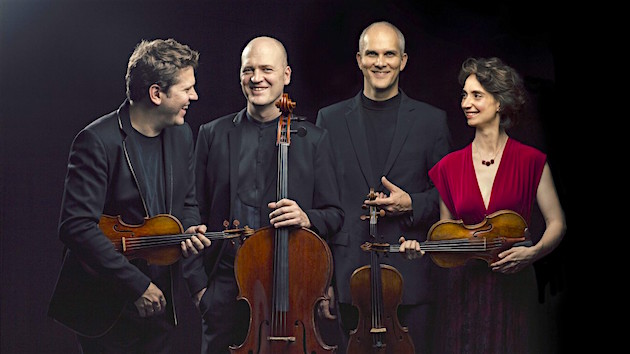
Having changed back to standard Tourte bows, which produce a meatier sound, the tremolo entrances that mark the opening of Mendelssohn’s Op. 80 were even more striking. In fact, the music is searchingly motivic in a way similar to the Haydn quartet — but emotionally, the works are worlds apart.
Mendelssohn wrote the quartet after the death of his sister, and it’s an emotionally tormented work, one whose drama the Casals Quartet expertly cultivated. The outer movements are easy to overplay, but on Saturday, frequent pull-backs in sound made the highs soar even higher. And the finale’s ferociously difficult first violin runs (played by Martinez) were phenomenally fierce.
The key has hardly been established, and yet the first notes of the Adagio have the breathtaking quality of a long-anticipated climax. Rarely have I heard such moving Mendelssohn as I did on Saturday. The rest of the movement flowed in such a way that the main theme, ushered in by the cello’s melancholy descending line, seemed to suspend time — and Martinez’s shimmering vibrato made the sadness even sweeter.
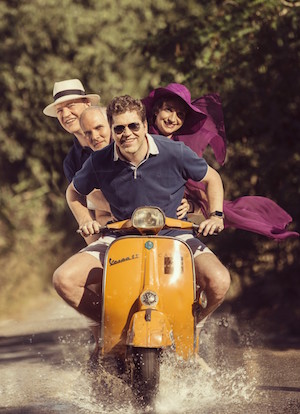
Beethoven’s Quartet Op. 131 was as technically masterful. The Presto weaved intricately, and in the variations movement, the tone quality was unusually beautiful. But the performance sometimes felt routine. Beethoven’s variations, in particular, deviate from the theme in increasingly zany ways that, on Saturday, passed by without much celebration — everything sounded the same.
This kind of flatness, though, did serve the opening fugue. In the slow tempo, phrases lengthened so that the ends were rarely in sight. Each voice played with equal emphasis, the phrases thickening all the way through, the impassive final chords, heavy, like a multiple-manual organ.
In fact, the limited scope of this program (with the music spanning about 65 years) made it difficult to really suss out the group’s personality. Actually, the quartet, whose members live in Barcelona, frequently collaborates with living composers — but Chamber Music San Francisco, the presenter of Saturday’s concert, doesn’t typically program new music. I hope to see another side of the Casals Quartet soon.

